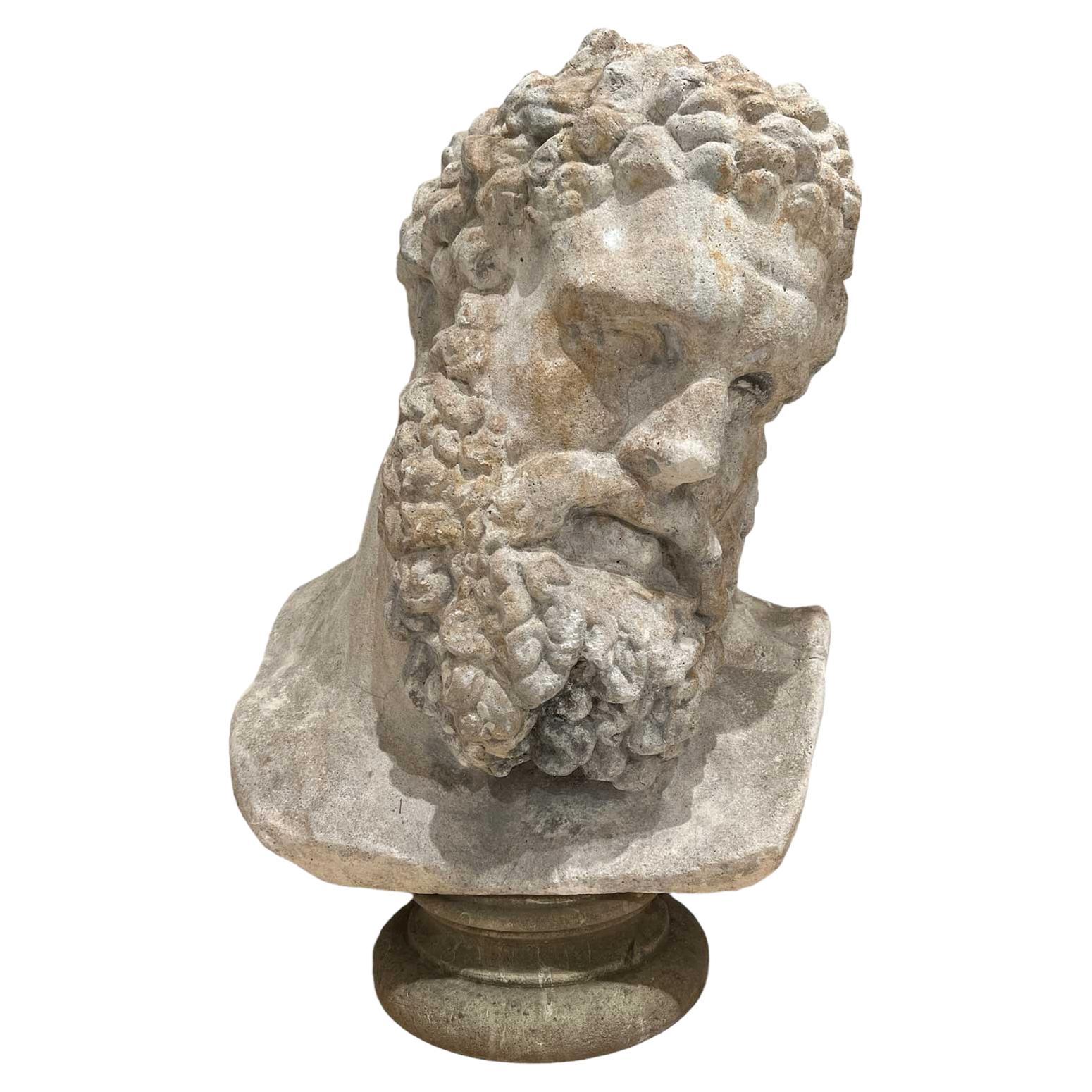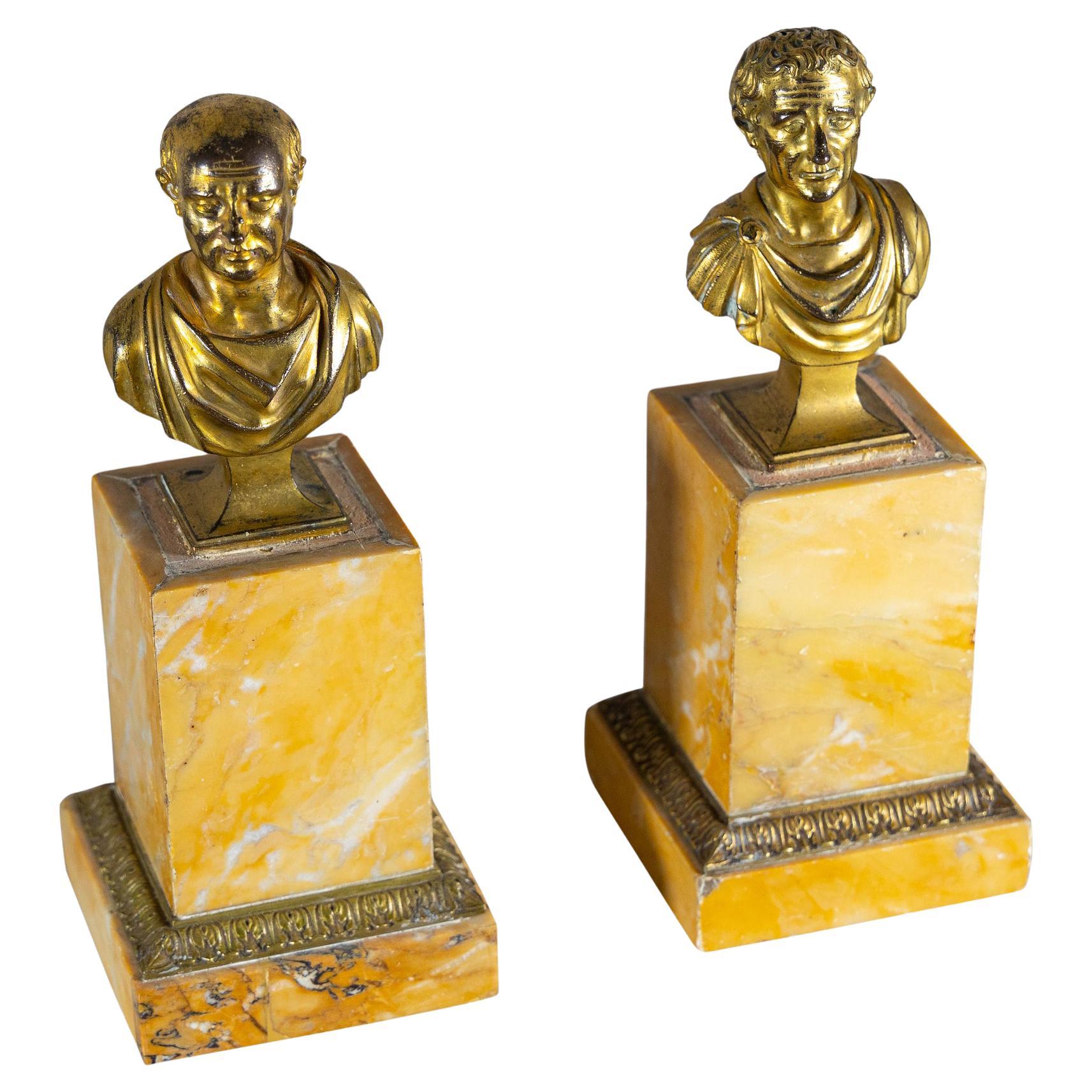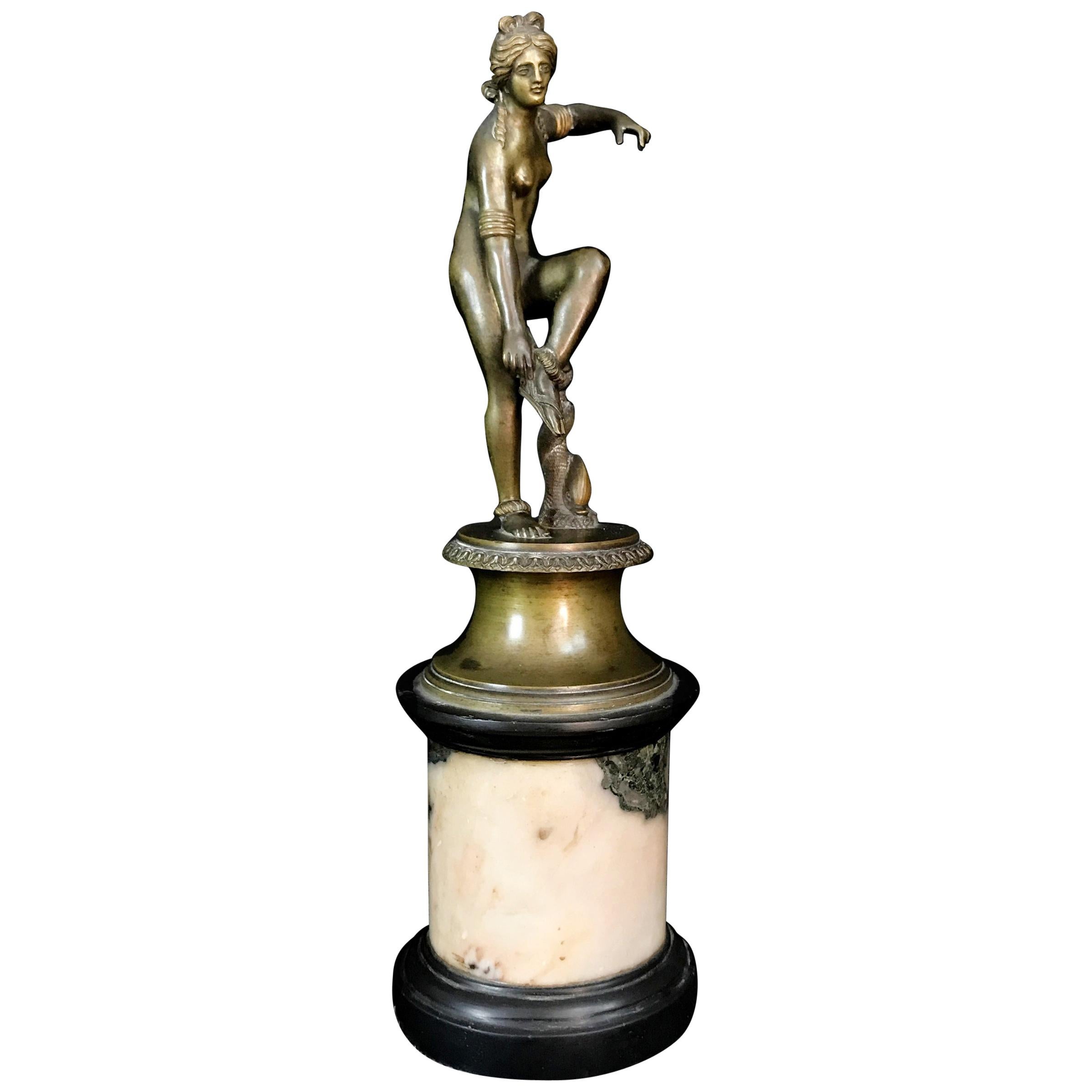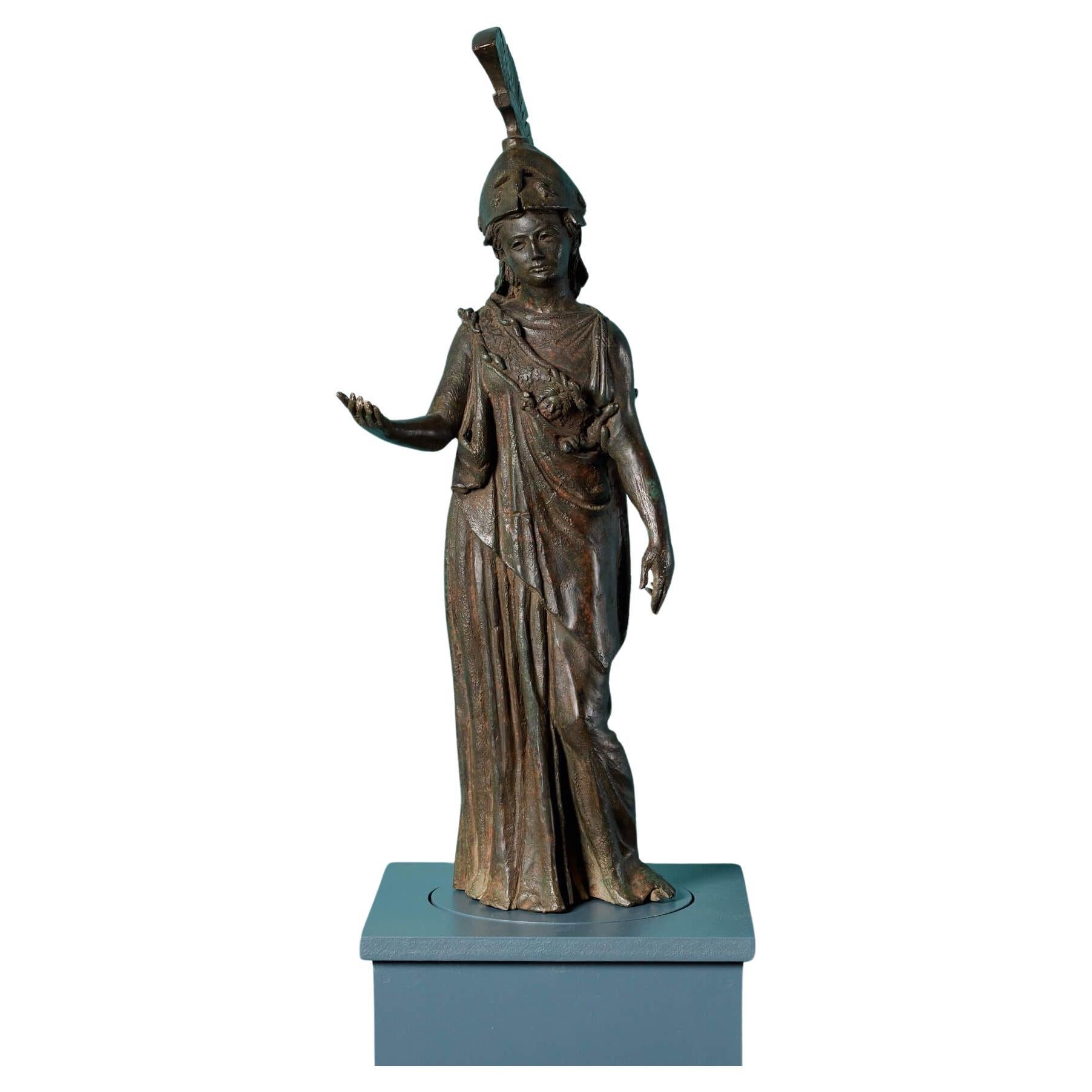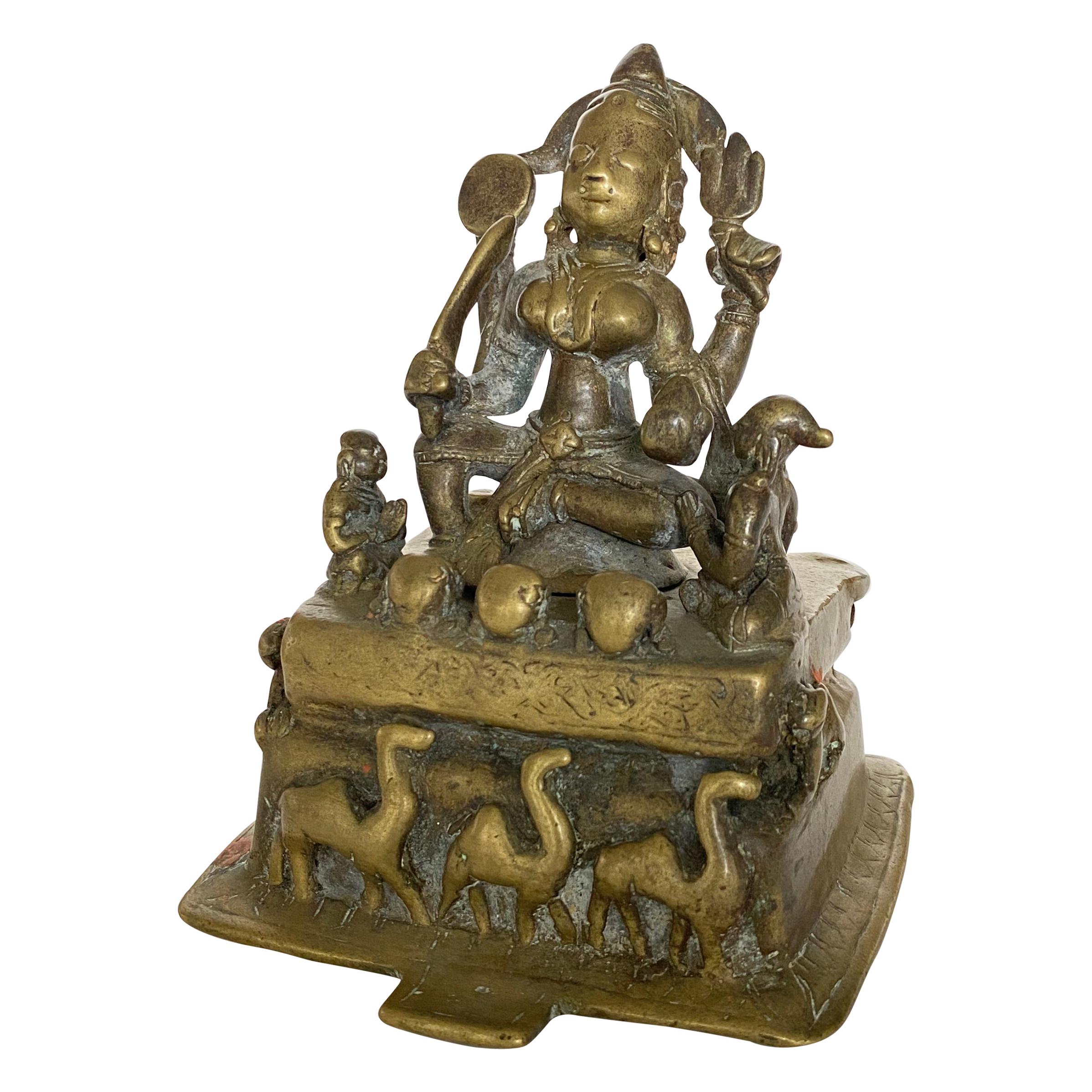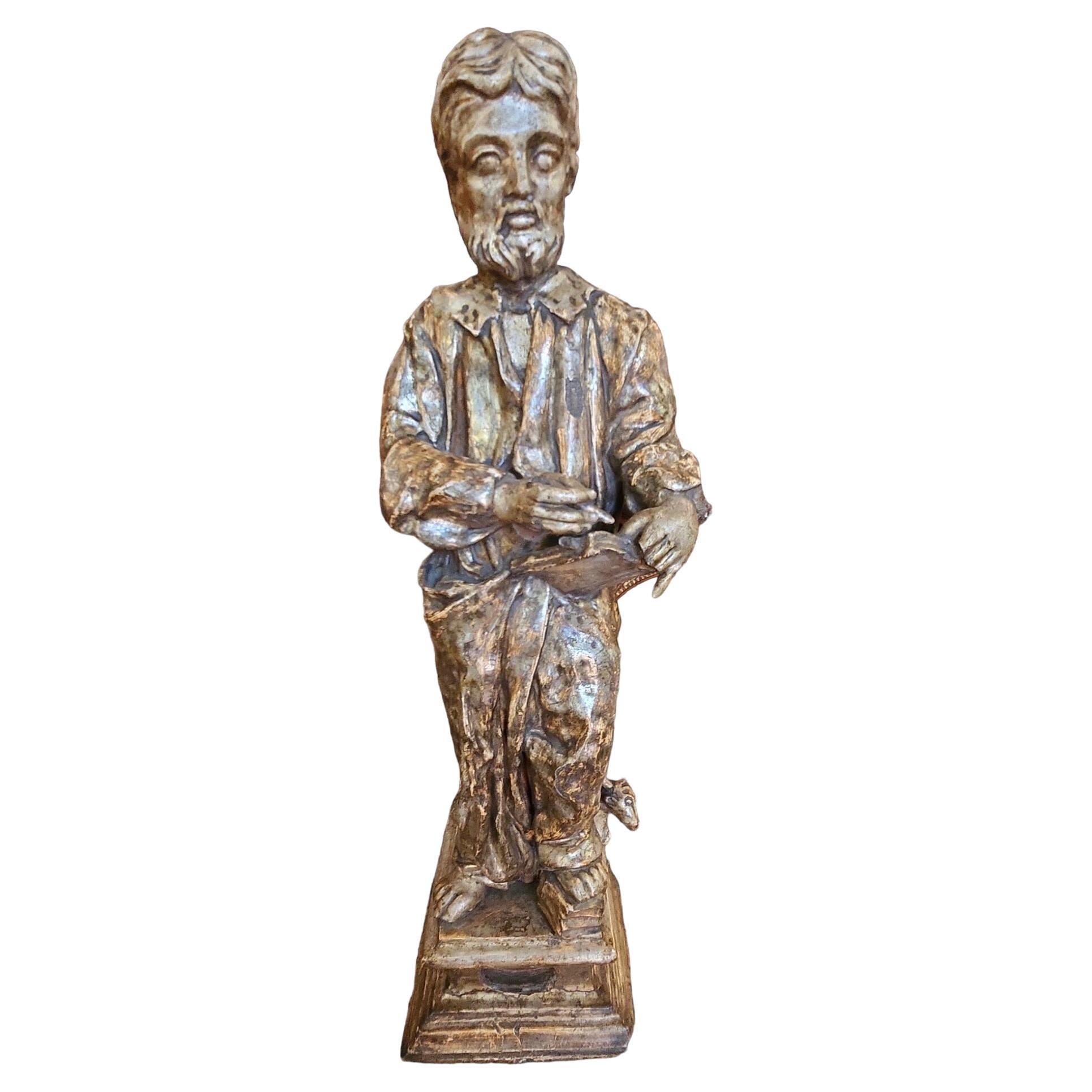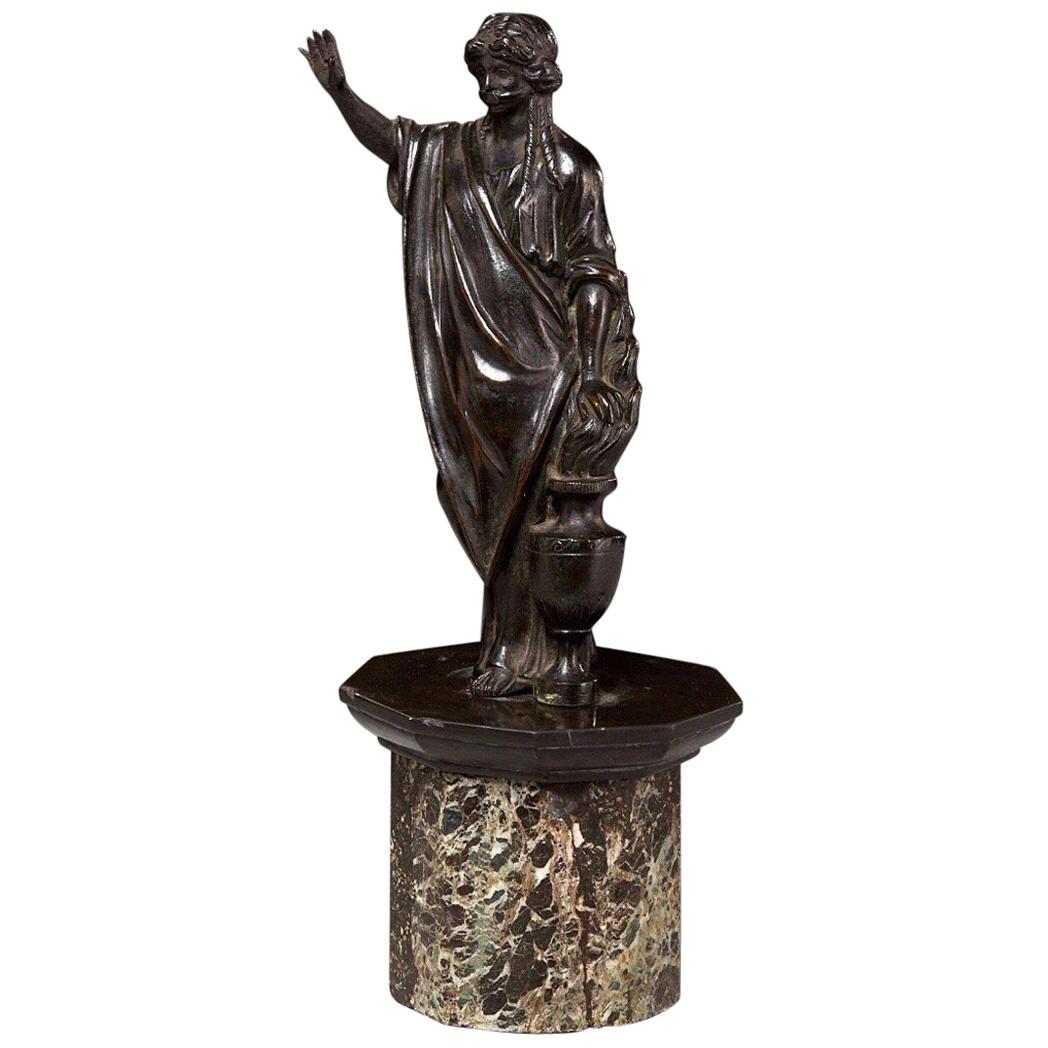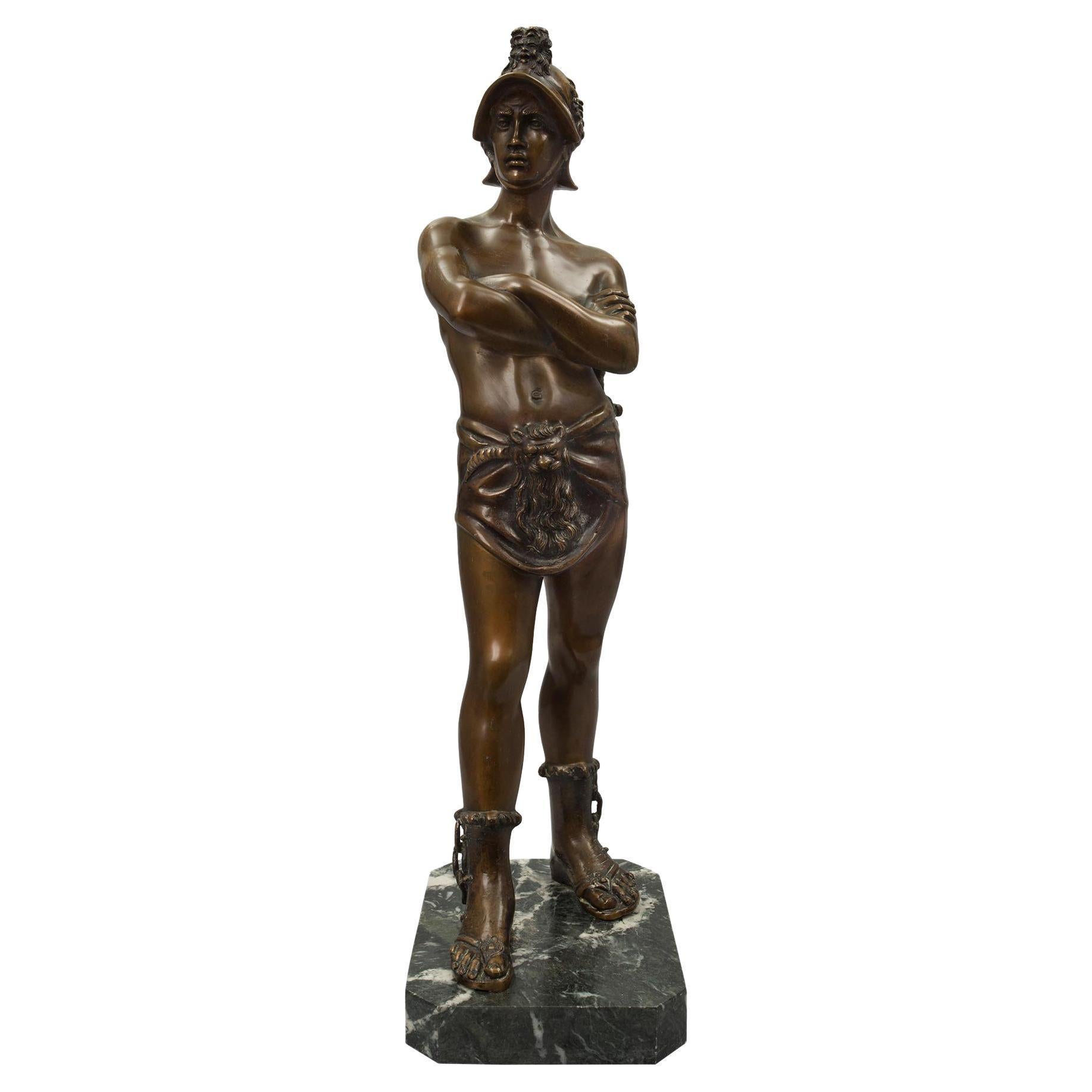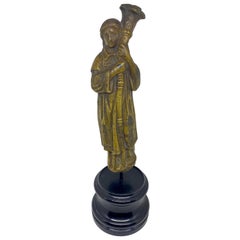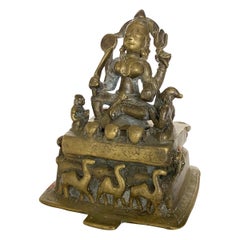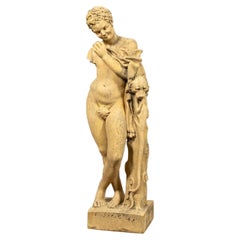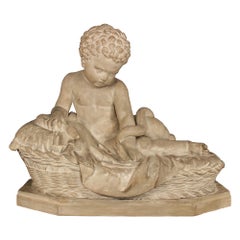
Bronze of the Young Hercules Wrestling with Serpents, Italy, 18th Century
View Similar Items
Want more images or videos?
Request additional images or videos from the seller
1 of 7
Bronze of the Young Hercules Wrestling with Serpents, Italy, 18th Century
About the Item
- Dimensions:Height: 6.38 in (16.21 cm)Width: 5.25 in (13.34 cm)Depth: 3.75 in (9.53 cm)
- Style:Neoclassical (Of the Period)
- Materials and Techniques:Bronze,Cast
- Place of Origin:
- Period:
- Date of Manufacture:18th Century
- Condition:
- Seller Location:Kensington, MD
- Reference Number:1stDibs: f97761710168803733fs
About the Seller
5.0
Vetted Seller
These experienced sellers undergo a comprehensive evaluation by our team of in-house experts.
Established in 1962
1stDibs seller since 2013
137 sales on 1stDibs
More From This SellerView All
- Bronze Figure of a Priest with Crozier, Italian, 18th CenturyLocated in Kensington, MDCast bronze figure of a priest holding a cornucopial form crozier. Mounted on a modern turned ebonized wood socle. The bronze figure is 9 1/2" tall. Overall height including th...Category
Antique 18th Century Italian Baroque Figurative Sculptures
MaterialsBronze
- 18th Century Indian Bronze of the Goddess DurgaLocated in Kensington, MDDurga is a warrior goddess in the Hindu culture, she is the protector of the good depicted here multi-armed with a sword, a trident, the wheel and a jewel in her hands. She is flanke...Category
Antique 18th Century Indian Tribal Figurative Sculptures
MaterialsBrass
- Italian Bronze Sculpture Group of the Farnese Bull, 19th CenturyLocated in Kensington, MDThis Italian bronze sculpture group of the Farnese Bull, after the antique, is handsomely modeled and detailed throughout with a lovely blackish to cocoa ...Category
Antique Mid-19th Century Italian Neoclassical Figurative Sculptures
MaterialsBronze
- Indian Bronze Figure of Yoga Narasimha, 17th-18th CenturyLocated in Kensington, MDThis beautifully patinated bronze figure of Yoga Narasimha, the fourth incarnation of Vishnu as a man-lion is from Kashmir in North India. Nara means man and simha means lion. He is ...Category
Antique Early 18th Century Indian Tribal Figurative Sculptures
MaterialsBronze
- Venetian Bronze Statuette of St. Jerome, 18th/19th CenturyLocated in Kensington, MDBronze statuette of St. Jerome, or St Hieronymous, in the manner of the Venetian sculptor Alessandro Vittorio (1525-1608) by the lost wax technique of bronze casting, which leaves a ...Category
Antique 18th Century Italian Baroque Figurative Sculptures
MaterialsMarble, Bronze
- Gilt Bronze Boy Allegory of Geography, French, 18th CenturyLocated in Kensington, MDThis charming depiction of a boy measuring the earth with a compass is an allegorical sculpture of geography. This bronze was cast using the lost wax technique and is fire gilded. He...Category
Antique Late 18th Century French Baroque Figurative Sculptures
MaterialsMarble, Bronze
You May Also Like
- 18th Century Napoli Bust of HerculesLocated in New Orleans, LAStrong, pensive face of Hercules in stone. Nice details with hair, beard and features.Category
Antique 18th Century French Busts
MaterialsStone
- 19th Century Bath Stone Sculpture of a Young HerculesLocated in Essex, MAEnglish, 19th century. Composite bath stone garden sculpture of a standing young Hercules with lion head cape. Unmarked. Approx. h. 55", w. 16", d. 14".Category
Antique 19th Century English Neoclassical Figurative Sculptures
MaterialsCast Stone
- Italian 19th Century Plaster Statue of Young Baby HerculesLocated in West Palm Beach, FLA very decorative Italian 19th century plaster statue of young baby Hercules. The statue is raised on an elongated hexagonal patinated base. Above is a wicker designed bed with large pillow and bedding. A small cherub resting in bed is focused on two serpents...Category
Antique 19th Century Italian Figurative Sculptures
MaterialsPlaster
- 16th CENTURY MARBLE SCULPTURE OF A YOUNG HERCULESLocated in Firenze, FISplendid sculpture in white Carrara marble depicting a young Hercules holding the world. Originally, the work was conceived to be used as a caryatid at the beginning of a sumptuous m...Category
Antique 16th Century Italian Renaissance Figurative Sculptures
MaterialsCarrara Marble
- Bronze Busts, Italy 18th CenturyLocated in Greding, DEPair of small gold-patinated bronze busts of two ancient philosophers on Siena marble pedestals (added, 2nd half of 19th century).Category
Antique 18th Century Italian Busts
MaterialsSiena Marble, Bronze
$3,944 / set - 18th Century, Italian Bronze Sculpture with Venus Removing Her SandalLocated in IT18th Century, Italian Bronze Sculpture with Venus Removing Her Sandal This bronze sculpture represents Venus as she takes off her sandal. Made in the neoclassical era in Italy, it consists of the bronze sculpture of the Greek goddess Aphrodite, Venus for the Romans. The naked goddess, getting ready for the bath, makes the very human gesture of loosing a sandal. The left arm is raised, as if to compensate the position while maintaining the balance. Next to her, wrapped around a rocky spur, is a dolphin, an animal iconographically linked to the goddess because of his birth from the foam of the sea. The figure rests on a cylindrical and concave bronze base, with finely chiselled reserves. The bronze element is in turn resting on a africano marble cylinder with black of Belgium marble base. Venus is one of the major Roman goddesses primarily associated with eros and beauty. It is traditionally understood as the equivalent of the Greek goddess Aphrodite, goddess of beauty, physical and passionate love, among the major deities of Olympus. His birth is due to a dramatic event: Uranus, Heaven, is mutilated by his son Cronus, who punishes him for the wrongs inflicted on his mother. The torn limbs of Uranus fall into the sea and fertilize the foam of the waves of the island of Cyprus. From the waves emerges in all its splendor Aphrodite. Since the 4th century, Aphrodite begins to be represented with characters more human and less heroic. Praxiteles with the 'Aphrodite Cnidia,' for the first time in the history of sculpture, depicts her naked, as she prepares to take a ritual bath. From the Pressitele’s model descend the Capitoline Venus (Capitoline Museums of Rome) and the Venus de’ Medici (Uffizi Museum of Florence) accompanied by Eros on the back of a dolphin. This vein also includes a subject frequently attested in the Hellenistic and then Roman Ages, with examples in bronze, marble and terracotta: the Aphrodite who fastens the sandal. The luck that this type of representation had in the following centuries is demonstrated by the vast number of sculptures that represent it. In this bronze work the goddess resumes the position of Oplontis’s Naked Venus: here Venus holds an apple in her left hand, a reminder of her victory in the beauty contest in which she prevailed over Minerva and Juno by judgment of Paris. In our bronze instead, the hand seems to want to shake the apple, which however has not been molded. Perhaps the bronze is inspired by another work, such as the bronzes kept in the archaeological museum of Padua. Another example is the famous 'Venus in bikini" found in Pompeii, so-called because it depicts the goddess in the same pose, but with the breasts and hips covered by bands painted in gold. The dolphin depicted next to it could be inspired instead to the Medici Venus...Category
Antique Late 18th Century Italian Neoclassical Figurative Sculptures
MaterialsMarble, Belgian Black Marble, Bronze
